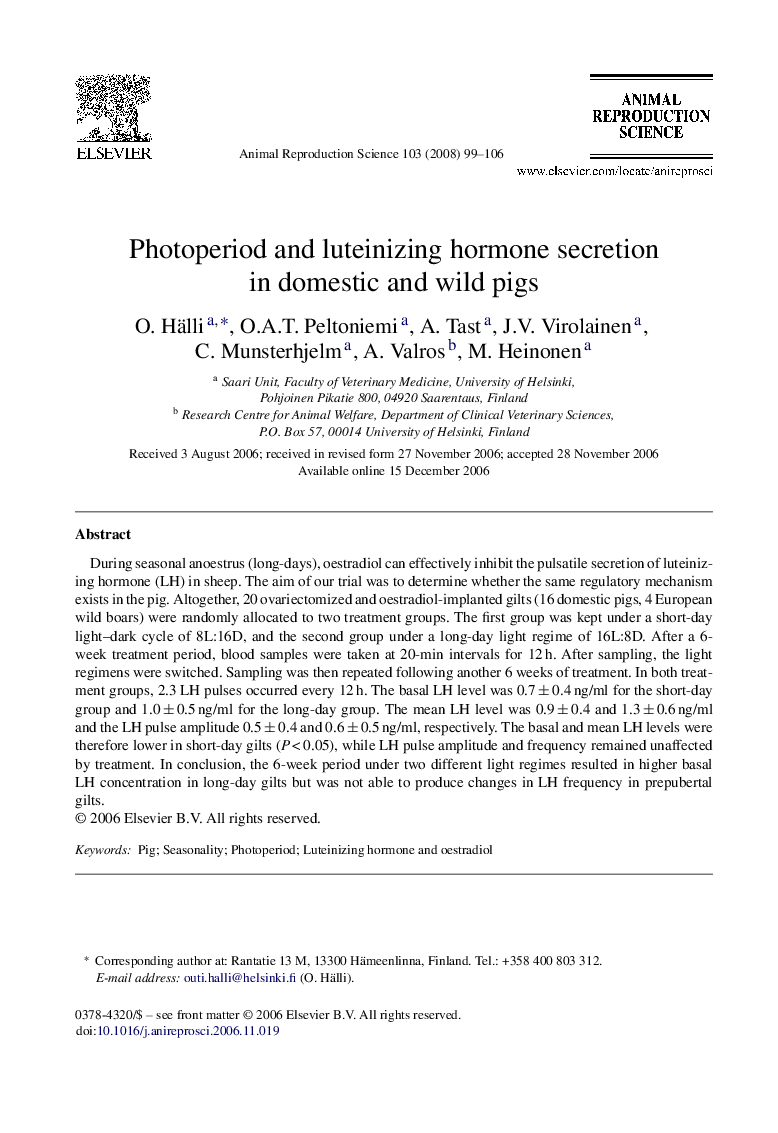| Article ID | Journal | Published Year | Pages | File Type |
|---|---|---|---|---|
| 2074641 | Animal Reproduction Science | 2008 | 8 Pages |
During seasonal anoestrus (long-days), oestradiol can effectively inhibit the pulsatile secretion of luteinizing hormone (LH) in sheep. The aim of our trial was to determine whether the same regulatory mechanism exists in the pig. Altogether, 20 ovariectomized and oestradiol-implanted gilts (16 domestic pigs, 4 European wild boars) were randomly allocated to two treatment groups. The first group was kept under a short-day light–dark cycle of 8L:16D, and the second group under a long-day light regime of 16L:8D. After a 6-week treatment period, blood samples were taken at 20-min intervals for 12 h. After sampling, the light regimens were switched. Sampling was then repeated following another 6 weeks of treatment. In both treatment groups, 2.3 LH pulses occurred every 12 h. The basal LH level was 0.7 ± 0.4 ng/ml for the short-day group and 1.0 ± 0.5 ng/ml for the long-day group. The mean LH level was 0.9 ± 0.4 and 1.3 ± 0.6 ng/ml and the LH pulse amplitude 0.5 ± 0.4 and 0.6 ± 0.5 ng/ml, respectively. The basal and mean LH levels were therefore lower in short-day gilts (P < 0.05), while LH pulse amplitude and frequency remained unaffected by treatment. In conclusion, the 6-week period under two different light regimes resulted in higher basal LH concentration in long-day gilts but was not able to produce changes in LH frequency in prepubertal gilts.
